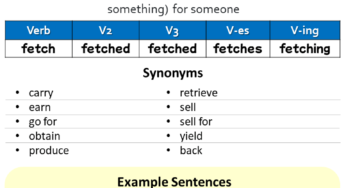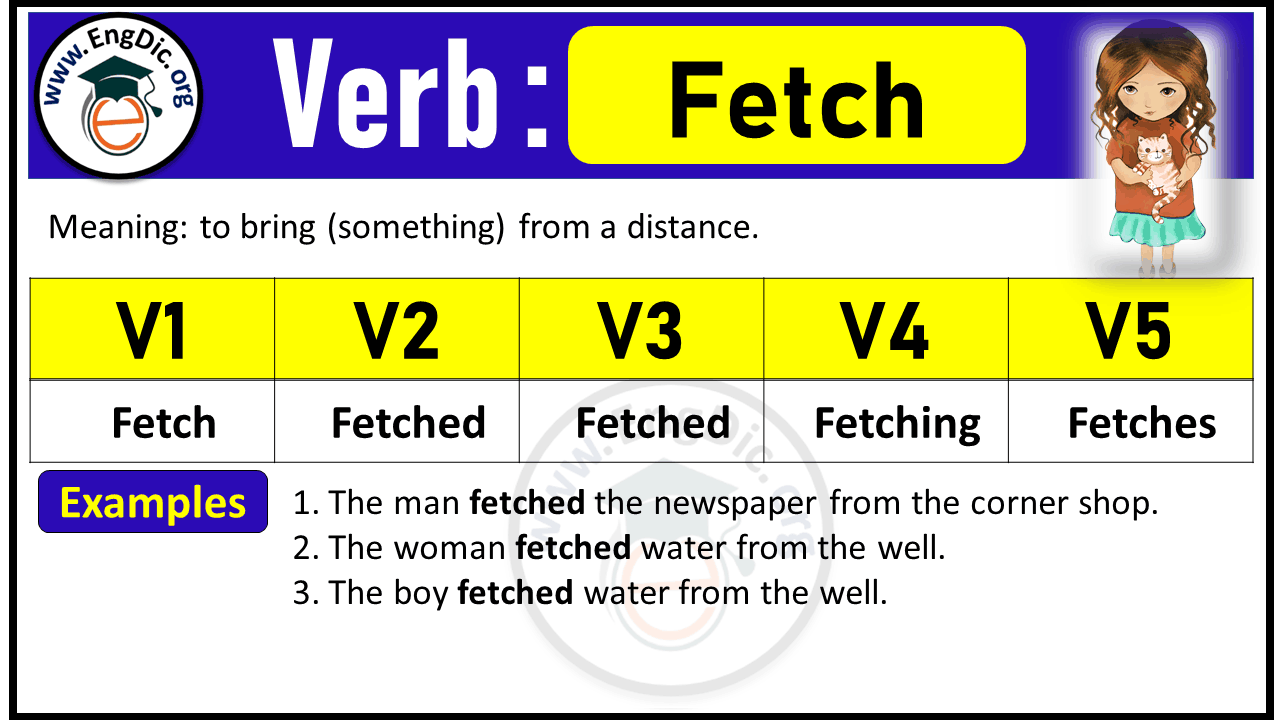Fetch Past And Past Participle Form V1 V2 V3 V4 V5 Form of Fetch
Understanding the various forms of a verb is like unlocking a treasure chest of language potential. When it comes to the verb “fetch,” knowing its past and past participle forms can significantly enhance your communication skills.
Imagine being able to use “fetch” in any tense, precisely and confidently. Sounds useful, right? This isn’t just about grammar; it’s about expanding your ability to express yourself clearly and effectively. As you dive into the world of verbs, you’ll discover the power of mastering their various forms.
So, are you ready to fetch some new knowledge and elevate your language game? Keep reading, and you’ll find yourself effortlessly navigating through the V1, V2, V3, V4, and V5 forms of “fetch. ” Let’s turn this small word into a powerful tool for your everyday conversations and writing.

Credit: englishstudyhere.com
Fetch: Present And Simple Past Forms
The verb “fetch”is easy to learn. In present form, it is “fetch”. This means to go and bring back something. The simple past form is “fetched”. This shows the action is done. Example: “He fetched the ball.” Both forms are used in sentences. It helps in daily talk.
Learning these forms makes speaking and writing clear. Practice with friends. Use sentences like “I fetch water” or “She fetched her book.” These examples show the action clearly. It is important to use the right form. This makes your message easy to understand.

Credit: engdic.org
Past Participle Of Fetch
The word “fetch” is a common verb. It means to go and bring back. The past participle form of fetch is “fetched”. This form is used in perfect tenses. For example, “She has fetched the ball.” In this sentence, “fetched” shows a completed action.
Different forms of fetch are useful in sentences. V1 is fetch, V2 is fetched, V3 is also fetched. V4 is fetching, and V5 is fetches. These forms help in making sentences easy to understand.
Learning these forms is important for grammar. Use them to make your writing clear. Practice with these forms. It will help you in daily conversations.
Continuous And Perfect Forms
The verb fetchchanges in different forms. In the continuousform, it becomes fetching. This form shows an ongoing action. For example, “I am fetching water.”
The perfectform shows action that is complete. It uses have fetchedor has fetched. Example: “She has fetched the ball.”
Past tenseof fetch is fetched. This shows action that happened before. Example: “Yesterday, I fetched the mail.”
Past participlealso uses fetched. It helps with perfect tenses. Example: “They have fetched their books.”

Credit: englishgrammarhere.com
Conclusion
Understanding the verb “fetch” and its forms is essential. It helps in using the word correctly. Knowing V1, V2, and V3 forms clarifies past actions. Using V4 and V5 forms enhances your sentence construction. Practice these forms in sentences. This will boost your language skills.
English becomes easier with regular practice. Remember, learning verbs improves communication. Keep revisiting these forms. Over time, it will all make sense. Language learning is a step-by-step process. Stay patient and consistent. Embrace the journey of learning English. Your efforts will pay off soon.
Keep practicing and stay motivated!






